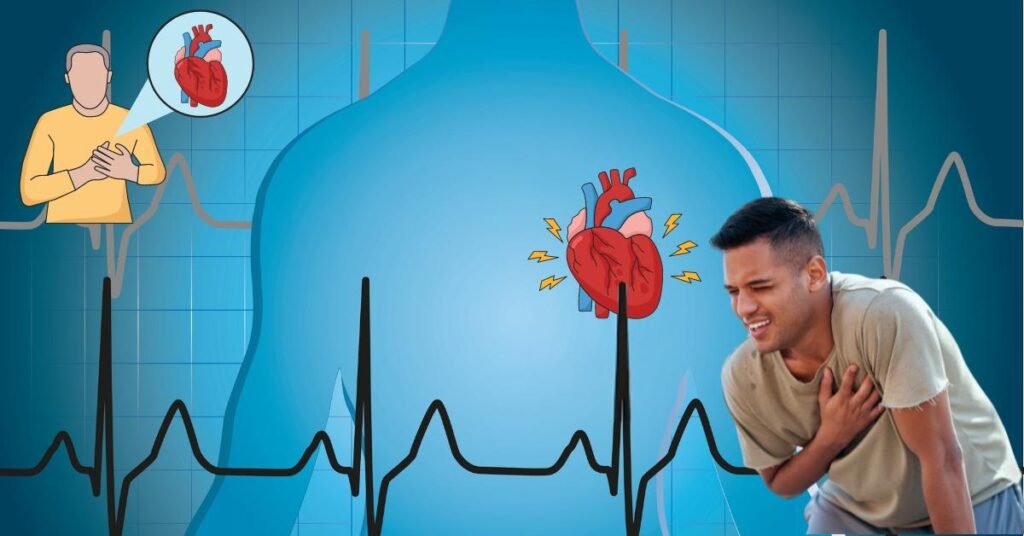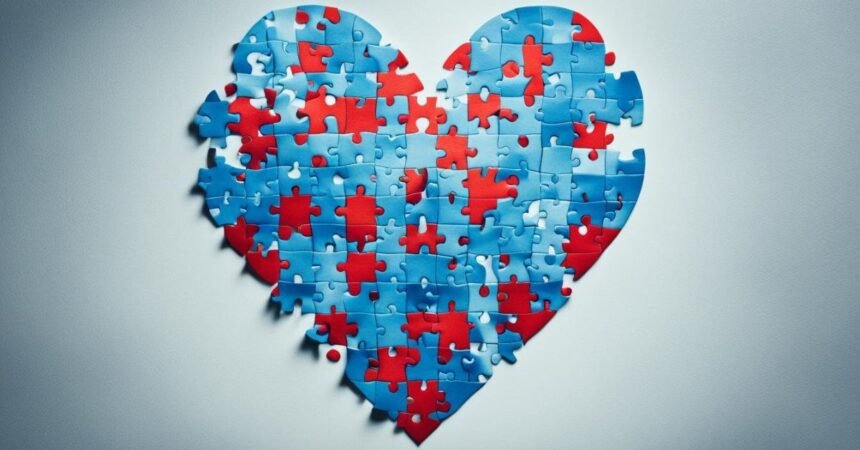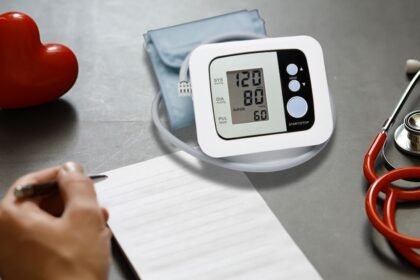Early Signs and Symptoms of Heart Disease : Imagine feeling tired after climbing a few stairs or having chest tightness on a normal day. These signs might seem small, but they tell us a lot about our heart health. Dr. Stephen Kopecky from Mayo Clinic says it’s key to watch for chest pain, shortness of breath, and feeling very tired. These could mean your heart is having trouble pumping blood efficiently, possibly due to coronary artery disease (CAD).
Living a heart-healthy life is important, but sometimes symptoms can still appear. If you have risk factors like age, gender, or health conditions, stay alert. Listen to your body and don’t ignore these signs. Learning about early heart disease signs helps you act fast and get the right help.
Chest pain is a common sign of heart issues, but it affects people differently. Women, older people, and those with diabetes might not feel it the same way1. Feeling very tired can also mean your heart is having trouble2. And if you’re short of breath, even when you’re resting, it could be a sign your heart is working hard1. Remember, these symptoms are warnings from your heart.
Key Takeaways
- Chest pain is the most common symptom of heart problems but varies in presentation among different individuals.
- Women, older adults, and people with diabetes might not experience chest pain as a symptom of heart disease.
- Extreme fatigue and shortness of breath are significant indicators of heart issues that should not be ignored.
- Swelling in the lower extremities can signal heart problems due to fluid buildup.
- Understanding and recognizing early heart disease signs can lead to timely medical consultations and better heart health outcomes.
Understanding Coronary Artery Disease
Coronary artery disease (CAD) is the top heart disease in the U.S3.. It happens when cholesterol builds up in arteries, making them narrow. This reduces blood flow to the heart, which is bad for your heart health.
Many things can increase your risk of CAD, like your age, gender, health, lifestyle, and family history3. Older people and men are more at risk, but women after menopause are too4. Conditions like high blood pressure, high cholesterol, and diabetes also raise your risk3. Bad habits like not moving much, being stressed, eating poorly, and smoking make it worse3.
Symptoms of CAD include chest pain and shortness of breath, and feeling very tired when you do things3. Women might not have chest pain but still have heart issues, so it’s important to watch for these signs4.
Doctors use tests like an ECG, echocardiogram, and stress test to check for CAD3. These tests show how much cholesterol and plaque are in the arteries.
Treatment for CAD involves changing your lifestyle and sometimes medicine or surgery3. You might need to eat better, exercise, manage your weight, reduce stress, and stop smoking3. Doctors might also prescribe drugs or perform procedures like angioplasty to improve blood flow to your heart3.
Chest Pain: The Most Common Heart Disease Symptom
Chest pain is a key sign of heart disease, often felt between the neck and upper abdomen. It’s known as angina and can feel like heavy or sharp pains. The pain’s intensity doesn’t always match the heart’s condition, making it important to pay attention to it.
Types of Chest Pain
There are many types of chest pain, each pointing to different issues. Angina, a sign of a heart attack5, feels like heaviness or tightness5. Women, older people, and those with diabetes might not feel much pain during a heart attack, making it harder to diagnose. The pain can spread to the arms, jaw, or back.
When to Seek Medical Attention
Get emergency help if chest pain lasts more than a few minutes, doesn’t go away with rest or nitroglycerin, or comes with other scary symptoms like shortness of breath or nausea5. Quick medical care can save lives. Since heart attacks happen every 40 seconds6, acting fast could be a lifesaver.
| Symptom | Gender | Occurrence Rate |
| Chest Pain | Both | High |
| Shortness of Breath | Women | Moderate |
| Fatigue | Both | Varies |
| Back/Jaw Pain | Women | Moderate |
With nearly half of American adults having heart disease7, knowing the symptoms is key. Fast action and expert care are vital. They can lower risks and help save lives.
Recognizing Shortness of Breath as a Warning Sign
Knowing when you’re having trouble breathing can save lives. It’s called dyspnea and happens when the heart can’t pump blood well. This makes blood back up in the veins leading to the lungs. People with heart issues often feel this as symptoms of heart failure.
Signs of Shortness of Breath
Shortness of breath can come with coughing, wheezing, and pink or bloody mucus. It can happen when you’re active, resting, or even lying down. Some might feel dizzy, sweaty, or anxious symptoms of heart failure8. If you notice these signs, getting medical help fast is key.
Related Heart Conditions
Heart failure isn’t the only condition that causes shortness of breath. Coronary artery disease (CAD), arrhythmia, cardiomyopathy, and heart valve issues can also make it hard to breathe9. These conditions affect how well the heart moves blood and oxygen, making symptoms get worse over time.
Getting medical help right away can really make a difference. If you’re having trouble breathing and it gets worse, call 911 for help10. Also, knowing when to rest and not overdoing it can help manage symptoms better8.
For those at risk of heart disease, especially if you’re 65 or older, regular heart check-ups are crucial. Knowing the warning signs is also vital. Waiting too long can lead to serious problems, showing why catching these signs early is so important.
Fatigue: An Overlooked Symptom of Heart Disease
Fatigue that goes beyond normal tiredness and affects daily life could be a sign of heart disease. This deep exhaustion might happen before or during a heart attack, especially in women11. It’s important to know the difference between normal tiredness and the deep weakness that could mean heart issues. Spotting early signs like long-lasting fatigue is key to preventing heart disease.
Women often show heart attack symptoms without chest pain, like discomfort in the neck, jaw, shoulder, upper back, or upper belly11. Fatigue from heart disease can come with chest pain or shortness of breath. If you notice these signs, it’s crucial to see a doctor.
Being inactive is a big risk for heart disease in both women and men, making it important to notice fatigue as a sign of health problems11. This ongoing tiredness can also be linked to conditions like diabetes or high blood pressure, which raise the risk of heart disease even more11. Smoking is also a bigger risk for heart disease in women than in men.

Spotting these warning signs early can help prevent heart disease. Women often show different symptoms, like feeling these symptoms even when resting or sleeping11. So, unexplained weakness that stops us from doing daily tasks needs quick medical help.
Depression is linked to a higher risk of heart problems, making it important to watch for fatigue along with other mental health signs12. Also, migraines, especially those with aura, are connected to heart events, which can make fatigue worse.
Palpitations and Irregular Heartbeats
Feeling your heart race or beat irregularly can be scary. Sometimes, it’s just from things like drinking too much coffee, eating too much caffeine, or not sleeping well. But, it could also mean there’s a problem with your heart that needs attention. It’s important to know what’s causing these feelings and when they might be a sign of something serious.
Common Causes of Palpitations
Many things can make your heart skip a beat, like drinking too much coffee, feeling stressed, or not getting enough sleep. These can lead to arrhythmias, which are irregular heart rhythms. About 1.5%-5% of people get arrhythmias13. Health issues like diabetes, high blood pressure, or thyroid problems can make these more likely13. Smoking and drinking too much alcohol also raise the risk.
When Palpitations Indicate Heart Problems
Most of the time, palpitations are harmless and happen just now and then. But if they keep happening or get worse, you should pay attention. They might mean you have a serious condition like atrial fibrillation (AFib), which makes your heart beat too fast13. AFib is a big deal because people with it are 4 to 5 times more likely to have a stroke14. Ventricular fibrillation (V-fib) is even more serious and needs immediate help.
It’s important to know when your heart symptoms could be serious. Feeling chest pain or pressure, getting short of breath, feeling dizzy, or fainting could mean you need to see a doctor fast. Tests like EKG, Holter monitors, and stress tests can help figure out what’s going on with your heart13.
For more info on early heart disease signs and staying healthy, check out Health Point Plaza.
Swelling in the Lower Extremities
Swelling in the lower legs, known as edema, can be a sign of heart issues. It happens when blood flow slows down and veins in the legs get backed up. This leads to fluid building up in the tissue. Heart failure, a long-term condition, is often linked to this swelling. It’s a key sign of heart disease and means there’s a higher risk of heart problems. People often visit doctors because of symptoms like coughing, feeling tired, and an irregular heartbeat15. This swelling can also show up in the belly and cause weight gain, which is a sign of worsening heart failure15
Why Swelling Occurs
Swelling happens when the heart can’t pump blood well, causing it to gather in the legs. Heart failure, often caused by coronary artery disease and high blood pressure, is the main reason for this15. This buildup of blood leads to swelling, alerting people to seek help. Men with hair loss at the crown of their head are also at a higher risk of heart disease, showing how complex heart risks can be16. Swelling can also point to kidney issues, blood clots, or poor blood flow in the veins.
Associated Risks and Complications
Edema is a warning sign of heart disease, making it crucial to spot these risks early. It’s not just about looks; it can signal serious health problems. Heart disease is a top reason for hospital visits among people over 65, and catching swelling early is key17.
Recommendations:
- Make lifestyle changes, like eating less salt, quitting smoking, and staying active, to reduce swelling.
- Medicines like ACE inhibitors, beta blockers, and diuretics are important for treating heart failure17.
- For severe cases, surgery such as coronary bypass surgery and implanting devices like defibrillators may be needed15.
If you notice swelling in your lower legs, it’s important to look for other signs of heart disease and talk to a doctor. For more information on handling heart failure and its symptoms, check out Medical News Today15.
Nausea and Vomiting Linked to Heart Conditions
Nausea and vomiting are not just stomach issues. They can also warn us of heart problems.
We should watch for these signs along with chest pain, shortness of breath, fatigue, or palpitations. Women might feel nausea and dizziness before a heart attack cardiovascular health18. It’s key for those at risk, especially older adults and those with heart health issues, to know these signs19.
Also, people with diabetes might have ‘silent’ heart attacks. They might feel nausea and shortness of breath first18. Missing these signs can lead to late treatment.
Since heart attacks are a big cause of death in New Zealand, we need to spread the word and act fast18. If you feel sudden nausea and vomiting with other heart attack signs, get help right away19. This can prevent serious heart problems.
In short, knowing how nausea, vomiting, and heart issues are connected can help us all. It can save lives by getting us to act quickly and seek treatment.
Pain Radiating to Other Areas
Radiating pain is a key sign of a possible heart issue. It usually starts in the chest and moves to other body parts. If you feel this pain, you should get medical help right away. It could mean you’re having a heart attack.
Signs of Radiating Pain
Knowing the first signs of radiating pain can save lives. This pain often goes from the chest to the arms, shoulders, neck, jaw, or back. If you feel pain on the left side, it could be a sign of a heart attack. Women might also feel tired, have back or stomach pain, or get easily tired before seeing other symptoms20.
Since over 350,000 cardiac arrests happen outside hospitals in the U.S. each year, it’s key to know these signs. This knowledge helps you act fast21.
Commonly Affected Areas
This pain can affect several areas, including:
- Arms and Shoulders: Pain often starts in the chest and goes down the left arm.
- Neck and Jaw: Pain moving up can be mistaken for other health issues.
- Back: In women, back pain can be a sign of a heart attack coming20.

Heart disease symptoms like radiating pain and pain on the left side are important signs. Taking quick action is crucial, especially since cardiac arrest is more likely outside a hospital21. So, if you see these signs, get help right away. Don’t drive yourself to the hospital to avoid accidents22.
Early signs and symptoms of heart disease to watch for
It’s crucial to spot the early signs of heart disease to act fast. Many people who had heart attacks noticed warning signs before, like feeling very tired, having trouble breathing, chest pain, feeling very worn out, and swelling in their legs or ankles23.
Men and women may show different symptoms of heart disease. Women might not always have chest pain. Instead, they might feel short of breath, nauseous, dizzy, or break out in a cold sweat23. This shows why it’s important to know what symptoms to look for, depending on your gender.
Knowing your own heart disease risks is key to preventing it. These risks include your age, family history, how you live, and any health issues you already have. Eating right, staying active, and avoiding harmful habits can lower these risks.
The Centers for Disease Control and Prevention (CDC) say about 47% of Americans have a heart disease risk factor24. Men are more likely to have heart disease than women24. Smoking also doubles your chance of getting heart disease24. So, checking your heart health regularly and getting screenings can help catch problems early.
Here’s a table that shows the risks for different groups of people:
| Demographic | Prevalence of Risk Factors | Common Symptoms |
| General Population | 47% with at least one risk factor | Chest pain, shortness of breath, fatigue |
| Females | High due to gender-specific factors | Shortness of breath, nausea, dizziness |
| Males | Higher prevalence compared to females | Chest pain, shortness of breath, fatigue |
By understanding these factors and symptoms, we can spot early signs of heart disease. This helps us take steps to prevent it.
Conclusion
Understanding heart disease is key to catching early signs and getting help fast. Signs include chest pain, shortness of breath, fatigue, palpitations, and swelling. These signs are clues to our heart health and help us manage it better.
Coronary artery disease is a big heart issue where arteries to the heart get blocked by plaque25. This can lead to serious problems if caught late25. Men and women show heart attack symptoms differently, with women often feeling short of breath, nauseous, and having jaw pain26. This shows we need to tailor how we spot heart disease.
In the U.S., heart disease is the top cause of death, killing about 1 in 4 people25. For women, it’s the main cause of death, and symptoms often start later, after menopause27. It’s vital to be proactive about heart health by spotting early signs and getting medical help. By being informed and making smart lifestyle choices, we can fight heart disease more effectively.
FAQ
What are some early signs and symptoms of heart disease?
Early signs of heart disease include chest pain, shortness of breath, and feeling very tired. You might also feel your heart racing or notice swelling in your lower legs. These signs mean you might have a heart health issue and should see a doctor quickly.
What is Coronary Artery Disease (CAD) and what causes it?
CAD happens when fat builds up in the heart’s arteries, making them narrow. This reduces blood flow to the heart. Risk factors include getting older, having high cholesterol, high blood pressure, diabetes, being overweight, not moving much, eating poorly, smoking, and having a family history of CAD.
What are the different types of chest pain associated with heart disease?
Heart disease can cause chest pain that feels heavy or like squeezing. It can also be sharp or burning. This pain usually means the heart muscle isn’t getting enough blood.
When should I seek medical attention for chest pain?
You should get help right away if chest pain lasts more than a few minutes. It should also go away with rest or nitroglycerin. Other signs like trouble breathing, passing out, feeling sick, or heavy sweating mean you should get help fast.
How can shortness of breath indicate a heart condition?
Trouble breathing can mean your heart is failing or you have CAD, arrhythmias, or cardiomyopathy. It happens when your heart can’t pump blood well, causing fluid to build up in your lungs.
What type of fatigue should raise concerns about heart disease?
Feeling very tired that affects your daily life and lasts a long time could be a heart disease sign. It’s especially concerning if you also have chest pain or shortness of breath. Women might feel very tired before a heart attack.
What are common causes of palpitations, and when should they be concerning?
Palpitations can come from things like drinking too much caffeine, being stressed, or not sleeping well. But, if you have palpitations with chest pain, shortness of breath, or feeling dizzy, it could be a serious heart problem. You should see a doctor.
Why does swelling in the lower extremities occur, and what does it signify?
Swelling in your lower legs, or edema, is often a sign of heart failure. It happens when blood flow is slow and causes fluid to gather in your tissues. This means you’re at higher risk for heart problems and should see a doctor.
Can nausea and vomiting be signs of a heart condition?
Yes, feeling sick to your stomach and vomiting can be signs of heart issues. They’re especially important if you also have chest pain, shortness of breath, or feel very tired. These symptoms are important for women to watch for during a heart attack.
What does pain radiating to other areas of the body indicate about heart health?
Pain moving from your chest to places like your arms, shoulders, neck, jaw, or back is a sign of a heart attack. This kind of pain means you need to get medical help right away because it’s a serious heart problem.
How can we prevent heart disease effectively?
To prevent heart disease, know the early signs and manage risks like high blood pressure, diabetes, and high cholesterol. Eat well, exercise regularly, reduce stress, and don’t smoke. Getting regular health check-ups and talking to your doctor is also key.
Source Links
- Warning signs and symptoms of heart disease Information | Mount Sinai – https://www.mountsinai.org/health-library/selfcare-instructions/warning-signs-and-symptoms-of-heart-disease
- Heart disease – Symptoms and causes – https://www.mayoclinic.org/diseases-conditions/heart-disease/symptoms-causes/syc-20353118
- Coronary artery disease – Symptoms and causes – https://www.mayoclinic.org/diseases-conditions/coronary-artery-disease/symptoms-causes/syc-20350613
- 11 Possible Heart Symptoms You Shouldn’t Ignore – https://www.webmd.com/heart-disease/features/never-ignore-symptoms
- 10 signs you might have heart disease – https://www.bhf.org.uk/informationsupport/heart-matters-magazine/medical/signs-you-might-have-heart-disease
- Heart Attack Symptoms in Women – https://www.heart.org/en/health-topics/heart-attack/warning-signs-of-a-heart-attack/heart-attack-symptoms-in-women
- Don’t miss a beat: 7 symptoms of heart disease to watch for | HealthPartners Blog – https://www.healthpartners.com/blog/dont-miss-a-beat-7-symptoms-of-heart-disease-to-watch-for/
- Symptoms of a heart attack – https://www.nhs.uk/conditions/heart-attack/symptoms/
- Heart attack warning signs | Heart Foundation – https://www.heartfoundation.org.au/your-heart/heart-attack-warning-signs
- Signs of a heart attack: Recognizing them and what to do – https://www.medicalnewstoday.com/articles/signs-of-a-heart-attack
- How heart disease is different for women – https://www.mayoclinic.org/diseases-conditions/heart-disease/in-depth/heart-disease/art-20046167
- These Are Subtler Signs of a Heart Problem – https://www.health.com/condition/heart-disease/9-subtle-signs-you-could-have-a-heart-problem
- Arrhythmia – https://www.webmd.com/heart-disease/atrial-fibrillation/heart-disease-abnormal-heart-rhythm
- Symptoms, Diagnosis and Monitoring of Arrhythmia – https://www.heart.org/en/health-topics/arrhythmia/symptoms-diagnosis–monitoring-of-arrhythmia
- Heart failure – overview – https://www.mountsinai.org/health-library/diseases-conditions/heart-failure-overview
- Surprising Physical Signs of Heart Disease – https://www.everydayhealth.com/heart-failure/symptoms/surprising-physical-signs-of-heart-disease/
- Congestive Heart Failure and Heart Disease – https://www.webmd.com/heart-disease/guide-heart-failure
- Are you having a heart attack? | Signs and Symptoms of a Heart Attack – https://www.heartfoundation.org.nz/your-heart/heart-attack-warning-signs
- Cardiogenic shock: A serious heart attack complication-Cardiogenic shock – Symptoms & causes – Mayo Clinic – https://www.mayoclinic.org/diseases-conditions/cardiogenic-shock/symptoms-causes/syc-20366739
- Early Signs of a Heart Attack – https://www.sutterhealth.org/health/heart/early-signs-of-a-heart-attack
- Know the Signs, Help Save a Life: Sudden Cardiac Arrest vs. Heart Attack – https://www.uchealth.com/en/media-room/articles/know-the-signs-help-save-a-life-sudden-cardiac-arrest-vs-heart-attack
- Women’s Heart Attack Symptoms: 6 Possible Signs – https://www.webmd.com/heart-disease/features/womens-heart-attack-symptoms
- Early Symptoms of Heart Disease – https://www.deaconess.com/Your-Health/Your-Health-Blog/June-2021/Early-Symptoms-of-Heart-Disease
- Heart Disease: Risk Factors, Prevention, and More – https://www.healthline.com/health/heart-disease
- Heart disease: Types, causes, and treatments – https://www.medicalnewstoday.com/articles/237191
- 6 Signs You May Have Heart Disease – https://www.orlandohealth.com/content-hub/6-signs-you-may-have-heart-disease/
- Heart Disease in Women | MedlinePlus – https://medlineplus.gov/heartdiseaseinwomen.html


















